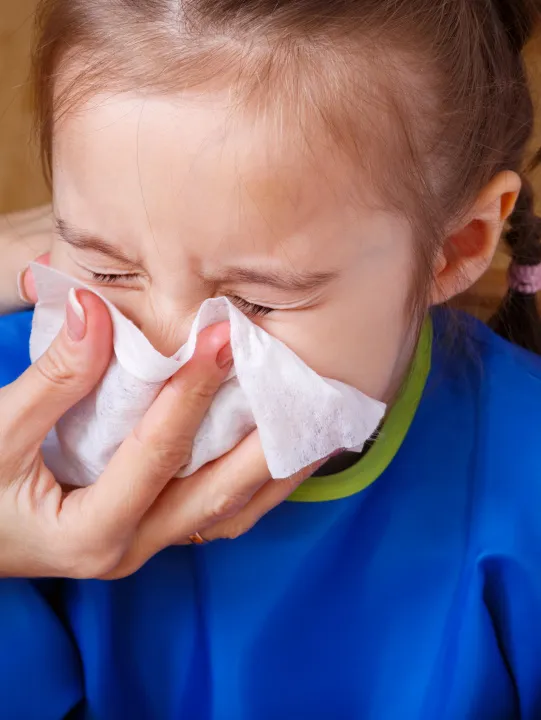01
The adenoids, lymphatic tissue located at the back of the nasal cavity, normally play a silent role in protecting children’s health. However, when enlarged due to recurrent inflammation (adenoid hypertrophy), they become obstacles to respiratory health. During autumn and winter—peak seasons for respiratory illnesses—children with adenoid hypertrophy often have weaker immune systems, making them more vulnerable to respiratory infections.
Additionally, adenoid hypertrophy causes nasal congestion and chronic mouth breathing, leading to dryness and discomfort in the nasal and pharyngeal regions. The cold, dry air of autumn and winter further irritates the nasal mucosa, exacerbating symptoms. This not only affects daytime breathing but also reduces sleep quality, weakens immunity, and increases the risk of respiratory infections.
02
Allergen "Festival" Season
Allergic rhinitis, on the other hand, stems from external allergens. Winter allergens—such as indoor dust mites, pet dander, mold, and cold air—are more active, making it a high-risk period for allergic rhinitis.
Moreover, patients with allergic rhinitis often have congested, swollen nasal mucosa, reducing their defenses against pathogens. This makes them more susceptible to viral and bacterial infections in autumn and winter. It also heightens the risk of complications like sinusitis and otitis media, which may worsen due to seasonal factors. Additionally, allergic rhinitis can trigger respiratory conditions like asthma, further complicating winter respiratory diseases.

03
The Battle for Protection
Practical Preventive Strategies
Respiratory discomfort from illnesses is challenging for anyone, but especially for children with pre-existing nasal congestion and sensitivity. Winning this protective battle requires effective prevention to reduce illness risks and alleviate symptoms of adenoid hypertrophy or allergic rhinitis.
Improve air quality: Wear masks in cold outdoor environments. Ventilate indoor spaces regularly to maintain fresh air. Use air purifiers to eliminate pollutants. Add humidity with humidifiers if needed, but avoid excessive moisture that fosters bacterial growth.
Regular nasal irrigation: Clean nasal passages with saline solution or specialized nasal irrigation solutions to remove bacteria, viruses, and allergens. Use a nasal irrigator for better efficacy, ensuring water temperature is comfortable to avoid irritating the nasal mucosa.
Avoid allergens: Identify specific allergens through testing and minimize exposure. If unavoidable, wear masks or pre-medicate with antihistamines or nasal sprays.
Vaccination: Vaccinate against viruses linked to upper respiratory infections (e.g., influenza) to reduce infection risks and mitigate symptom severity if infected. Follow a doctor’s advice for timely vaccinations.
Boost immunity: Maintain a balanced diet rich in vitamins and minerals. Encourage moderate exercise to enhance physical fitness. Limit outdoor activities during peak pollution or extreme cold.
Scientific prevention builds a healthy defense line for children. For those with existing conditions like adenoid hypertrophy or allergic rhinitis, seek medical guidance to manage symptoms and prevent complications with other respiratory illnesses.
